At the latest Career Tools event, Corey Pressman, the VP of Adaptive Strategies at Fiction, a local business strategy and design agency. Pressman helps clients adapt to recent technologies, modern expectations, and new audiences while staying faithful to their “brand truth.” For Career Tools, Pressman lectured on “The Alchemy of Wasted Time,” encouraging businesses to assign work hours devoted to thinking and daydreaming, a strategy Google and 3M use to develop new product and service ideas.
The Alchemy of Wasted Time (Briefly Defined)
The Alchemy of Wasted Time is a framework for innovation used by individuals, teams, and organizations. All employees should be given the opportunity—via breaks in the busy workflow for pondering the arts, playing with new ideas, and daydreaming—to design new (and potentially lucrative) products and services.
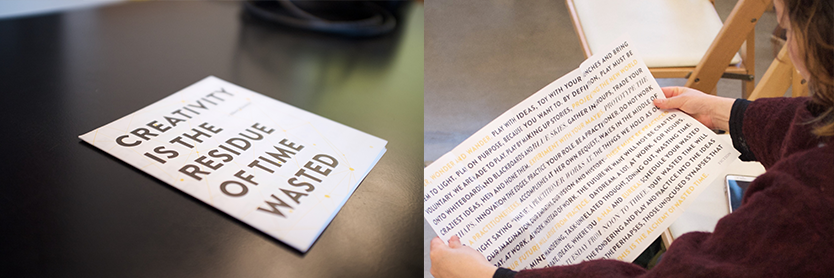
Science Fiction and Technology
Dating back to the 18th and 19th centuries, science fiction anticipated our modern technologies, and Pressman believes we’re at living at the beginning of the science fiction future. In other words, we can only begin to imagine what technologies our descendants will use daily.
- The Motorola Razr was basically a prototype of the 1966 Star Trek tricorder
- Self-driving cars were anticipated in Logan’s Run, a dystopian 1976 film where everyone was killed when they turned 30.
Not just science fiction anticipated many of our modern technologies.
Vannevar Bush wrote of his MEMEX, “A new profession of trailblazers, those who find delight in the task of establishing useful trails through the enormous mass of the common record will arise.”
“We are those trailblazers,” Pressman says. “This moment that we’re in is the first few seconds of the science fiction future. The iPad is 3,000 days old.”
Pressman asserts that we’re at the beginning of what could be a glorious future, but he warns that science fiction movies are often dystopias where machines and artificial intelligence takes over. (Consider Terminator’s Skynet and The Matrix.) Therefore, we must heed this warning and make the future technologies human-centered.
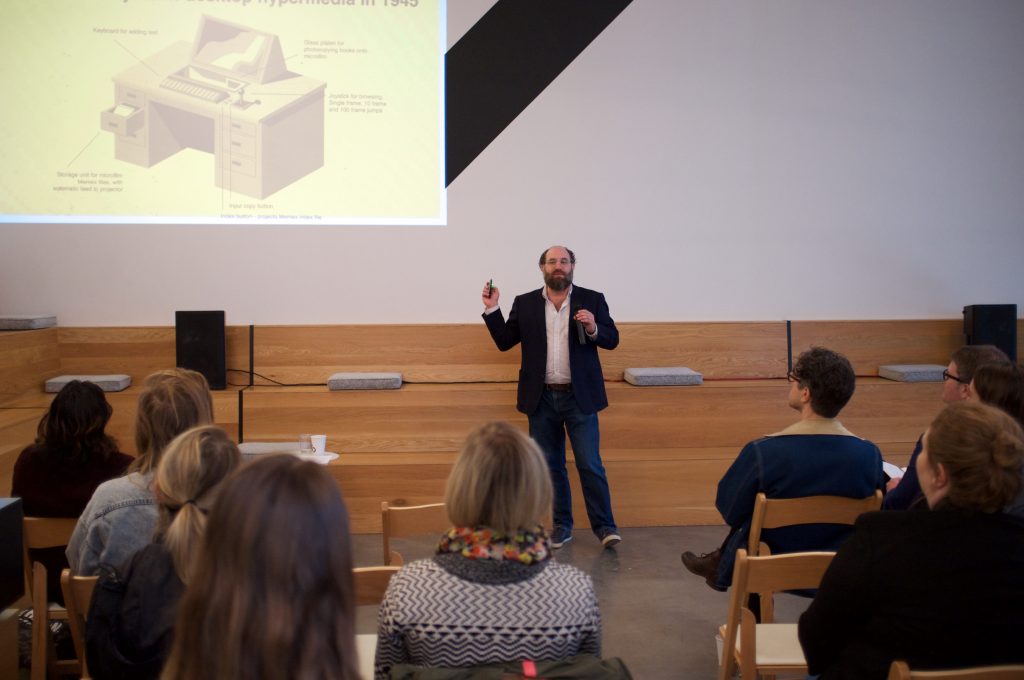
The Poet and the Computer
In 1966, Harvard scholar Norman Cousins wrote, “The essential problem of man in a computerized age remains the same as it has always been. That problem is not solely how to be more productive, more comfortable, more content, but how to be more sensitive, more sensible, more proportionate, more alive.”
Cousins anticipated that someday computers would become ubiquitous and believed we’d run into trouble if they were only designed by computer technicians: “Without taking anything away from the technicians, it might be fruitful to affect some sort of junction between the computer technologist and the poet. A genuine purpose may be served by turning loose the wonders of the creative imagination on the kinds of problems being put to electronic tubes and transistors. The company of poets may enable the men who tend the machines to see a larger panorama of possibilities than technology alone may inspire.”
Putting the poet into the room is what The Alchemy of Wasted Time is really about. “Poet” is shorthand for any of the arts and humanities. This doesn’t necessarily mean hiring a ton of English majors—although Pressman recommends this, too—but the Alchemy of Wasted Time is a method for everyone to find the poet within themselves.
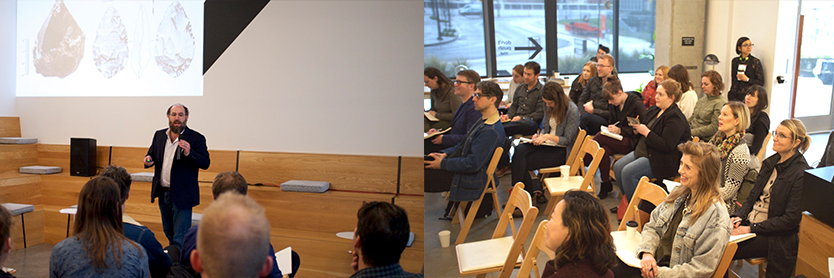
Science, The Endless Frontier
The premise of The Alchemy of Wasted Time is based on Vannevar Bush’s 1945 presidential report “Science, the Endless Frontier.” The concept is that we can divide our time as a scientist, as an artist, and as a human being between two axes: one axis is the search for understanding and the other is the application of understanding. These two axes create a matrix with four quadrants.
-
Bohr Quadrant
Searching for understanding without application is named after Niels Bohr, who studied atomic theory for no other reason than he thought it was beautiful. He joined the Manhattan Project in part to convince people not to use nuclear power as a weapon.
-
Pasteur Quadrant
The sweet spot for scientists is when searching and applying understanding at the same time. This quadrant is named after Louis Pasteur, who studied microbiology and then applied that knowledge to vaccination and pasteurization.
-
Edison Quadrant
This quadrant where people are applying understanding without searching for understanding—most people’s Monday to Friday—is named after Thomas Edison, who wasn’t interested in learning new fundamentals about electricity but rather building light bulbs.
-
Unnamed Quadrant
The final quadrant, where people are neither searching nor applying understanding, is unnamed. The scientists wrote off this quadrant, but Pressman argues that this one is the most important.
The Alchemy of Wasted Time
Pressman reclaims and renames the quadrants.
-
Ponder Quadrant
The Bohr quadrant is renamed the ponder quadrant. You’re searching for understanding without any consideration of its application by pondering literature, poetry, history, psychology, dance, and other fine arts. Don’t worry about how to monetize as you explore. This endeavor is to bring out the poet in you so that you can later make human-centered innovation. Find a way to fit this into your organization. Warby Parker does this every few weeks. Every week Fiction has “Cool shit Wednesday” where they share things they’ve been pondering with one another. For clients, Fiction builds libraries based on subjects they’re studying. Then, they dim the lights in the conference room and run a symposium with wine, crackers, and conversation.
-
Play Quadrant
Play with the ideas generated during pondering. When asked what he did as a profession, Louis Pasteur said he played with microbes. Playing often leads to real innovation. Some companies devote entire buildings to innovation, but Pressman is interested in everyone in the company workshopping and prototyping as many ideas as possible. Pressman retells the story about a ceramics class from the Art & Fear: Observations On the Perils (and Rewards) of Artmaking by David Bayles. The moral is this: the quest for perfection is paralyzing and can lead to nothing but indecision; however, if you attempt for quantity, you’ll eventually improve and find better designs before you could ever achieve one “perfect” thing. Pressman then quotes ceramics artist Romy Northover, “In Western culture we’re always striving to see how close the hand can get to the precision of a machine, but once you create something immaculate, where do you go from there? Imperfection, on the other hand, has no limits.” Experimentation leads to new products to sell. This is how 3M created Post-it notes.
-
Practice Quadrant
If you ponder, play, and daydream, you go from being a worker for something to a practitioner that’s working at.
-
Daydream Quadrant
This is the most important quadrant, where you’re neither applying nor searching for understanding. You’re un-tasking, allowing your mind to wander. Neurologically, this is our default mindset. Connections are made during the incubation and synthesis of ideas. This is when people get their “Aha!” moments. Albert Einstein is credited as saying, “Creativity is the residue of time wasted.” Therefore, allocate time at work for daydreaming. Put a puzzle in the back of the room. Encourage employees to go for a walk. Any manual task that takes little memory—such as knitting or macramé—allows your mind the opportunity to wander and daydream.
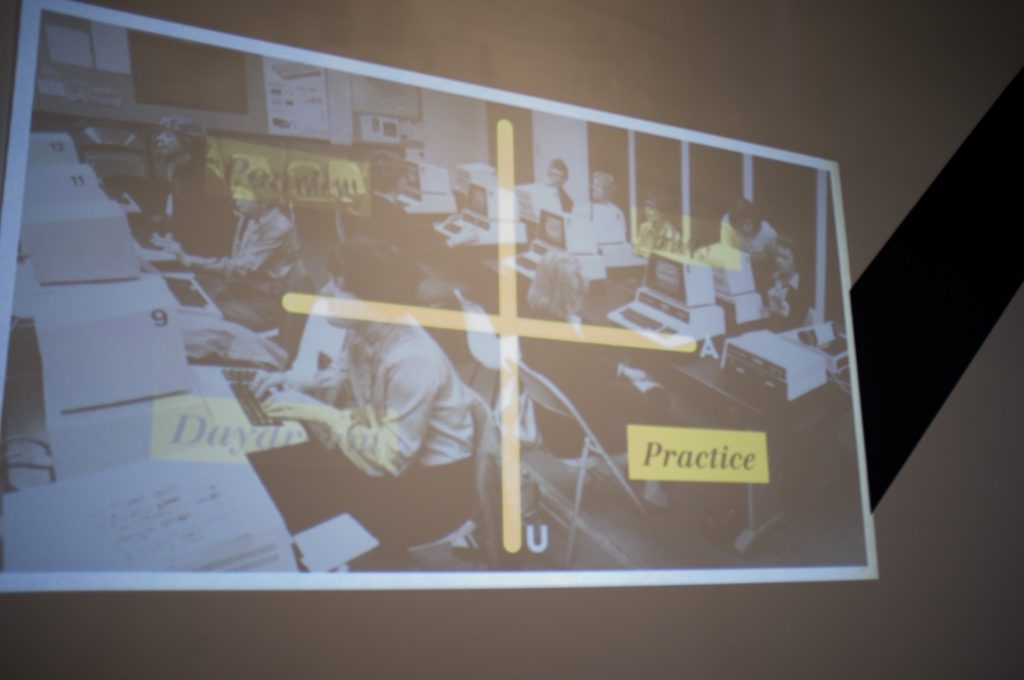
The Alchemy of Wasted Time as a Mathematical Equation
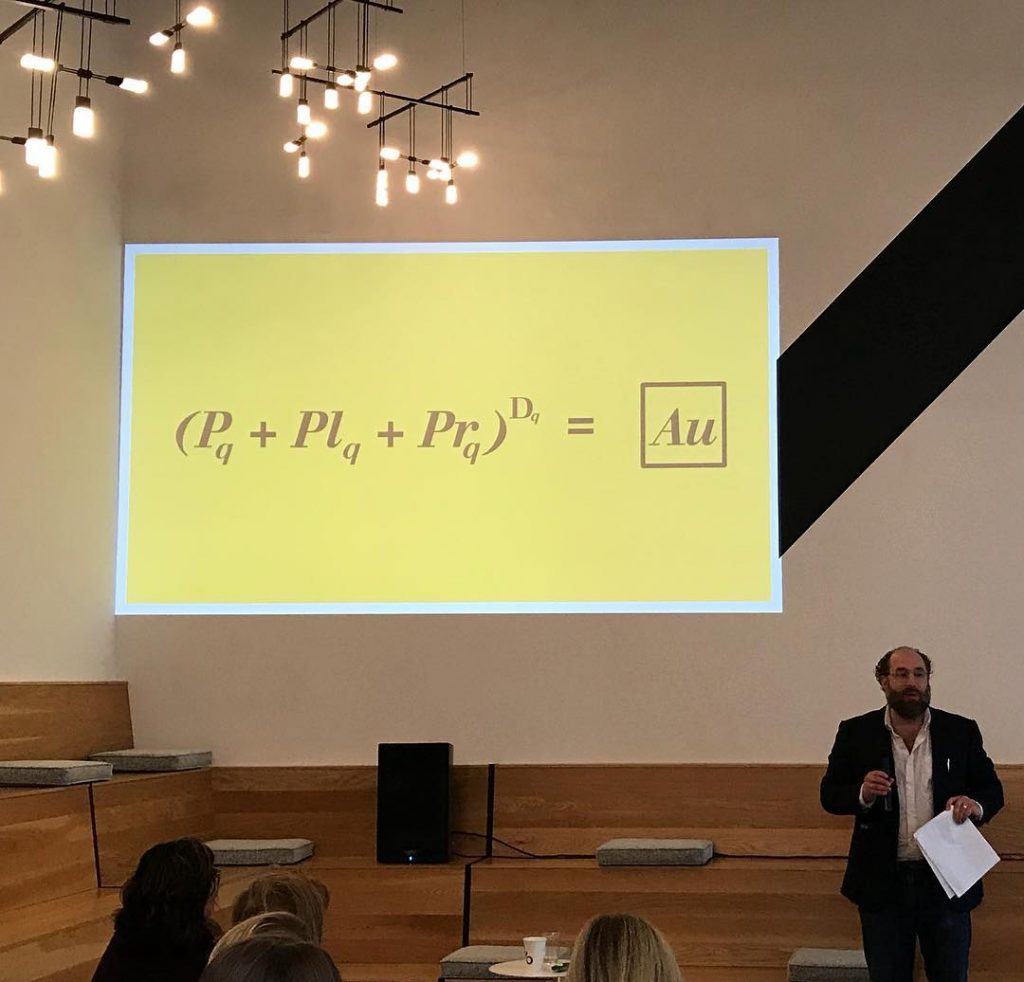
Au also happens the chemical symbol for gold.
Questions from the Audience
What is the difference between pondering and daydreaming?
The ponder quadrant is active homework: reading, studying and watching TED talks. Daydreaming is less focused, more spacing out. Our minds always lapse into daydreaming, but the daydream quadrant is devoted to allowing the mind to wander.
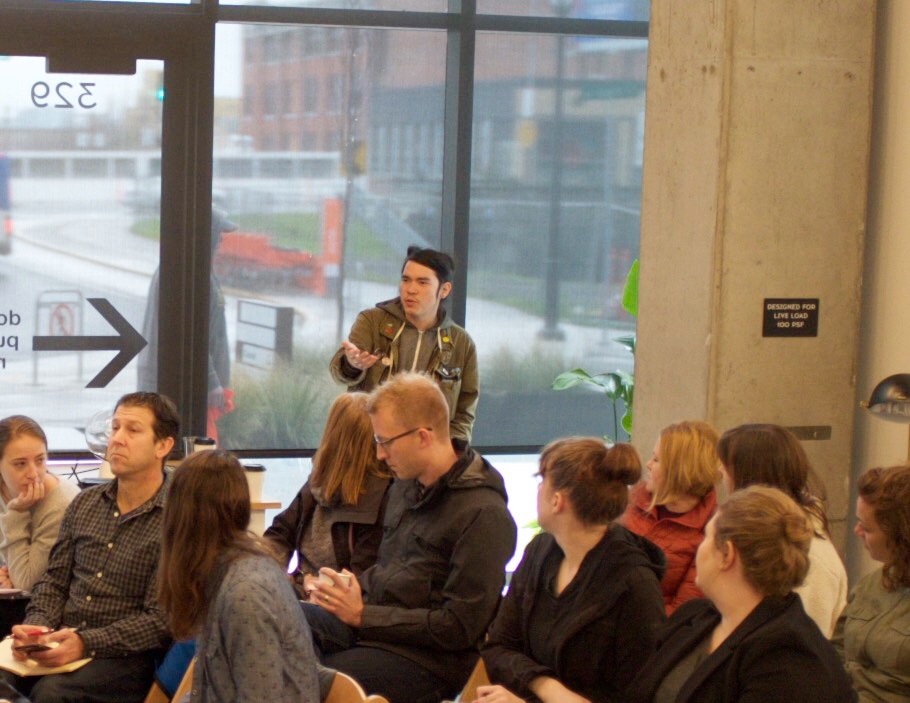
Is screen addiction a form of digital daydreaming for the incubation and synthesis of their ideas?
There is talk now about reclaiming boredom because your mind wanders when you’re bored. However, you have to teach your mind to wander in a positive way. Neuroscientists first started studying mind wandering because it tends to lead to depression. Later, they realized it also leads to innovation. Through forced attention, screen addiction often forces the user into an empty calorie ponder quadrant.
Are any schools integrating this?
Arbor School of Arts & Sciences in Tualatin is not explicitly set up with the Alchemy of Wasted Time, but it’s set up similarly, as are other schools. Pressman says he would love to see curriculum set up with the four quadrants.
Don’t children exhibit these things naturally?
Pressman believes that there’s nothing in the quadrant system that we don’t already do and want to do already, but social structures created during the Industrial Revolution squeezed them out of our work lives. We’ve become more cog-like in that we devalue ponder, play, and daydream. The quadrants give permission through a process for us to reclaim these actions.
How do we make a case for this to our organization?
Fiction is piloting the Alchemy of Wasted time with clients to measure how this translates into money. There are a few places where companies get ROI. One of those is a larger surface area for innovation because everyone in the company is creating a database of dreams. The quantity of imperfect ideas is what creates new products and services, as Google and 3M have shown. The arts and humanities give the ideas a human-centered edge. Employees experience more vitality, are happier to be at work, and that can improve people’s health, which could lower insurance premiums. Fiction always gets pushback from CFOs, so they’re piloting with small groups of 5-7 people.
How can I market myself to an employer as someone who ponders and plays?
The best way is you show up with results. Show yourself to be a vital person who’s always spinning off amazing ideas, sharing cool papers with people, and being that lynchpin.
How does someone without a humanities background begin?
Go to the museum. Go to Powell’s Books. Wander around. Check out Brainpickings. Go to plays. Think about movies. Study philosophy such as the School of Life. Be courageous.
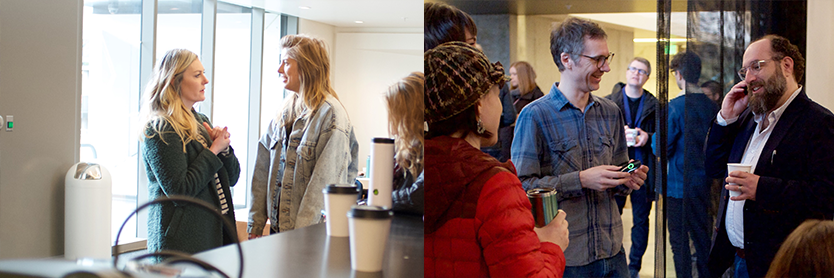
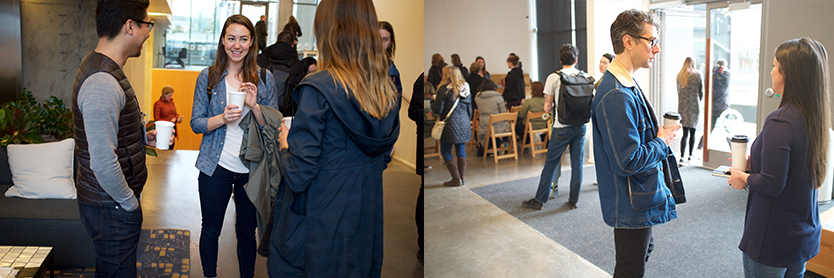
Photos from the event
Photography at this AIGA Portland Career Tools event by Rowena Thijm. Additional photos are available on the AIGA Portland Flickr.
Event Sponsors

52 Limited is a digital resource company connecting creative + technology talent with leading brands, marketing and engineering departments, start-ups, design firms, advertising and interactive agencies. 52 Limited began as Portland’s only locally-owned creative staffing agency and now serves some of the world’s most recognizable and forward-thinking companies in Portland, Seattle and San Francisco.

CENTRL Office is a collaborative, co-working space in Portland, OR. They provide flexible, full-service office space for some of Portland’s leading entrepreneurs, free agents, start ups, and work groups. Located on both sides of the river, in the Pearl district’s historic GE Supply Co. building, and in the Slate at the Burnside bridgehead at Couch and MLK, in the Central Eastside.

Fiction is a Portland-based design and strategy studio working with local and global brands. They help clients discover and tell their truth, forging lasting emotional connections with their audience.